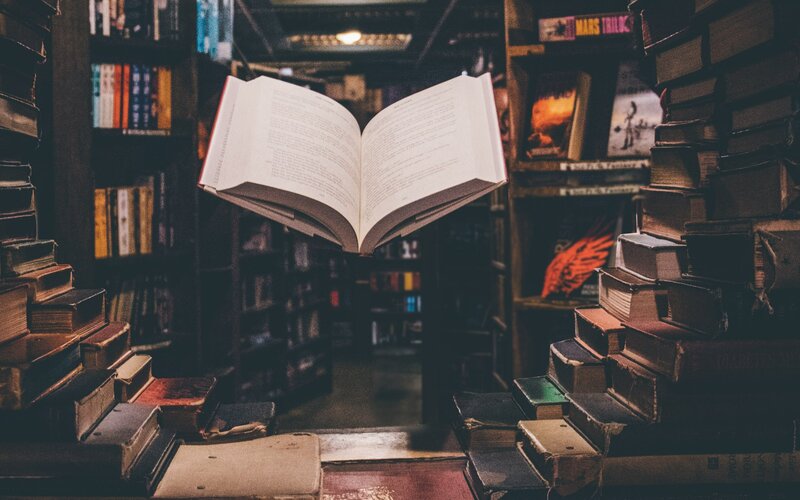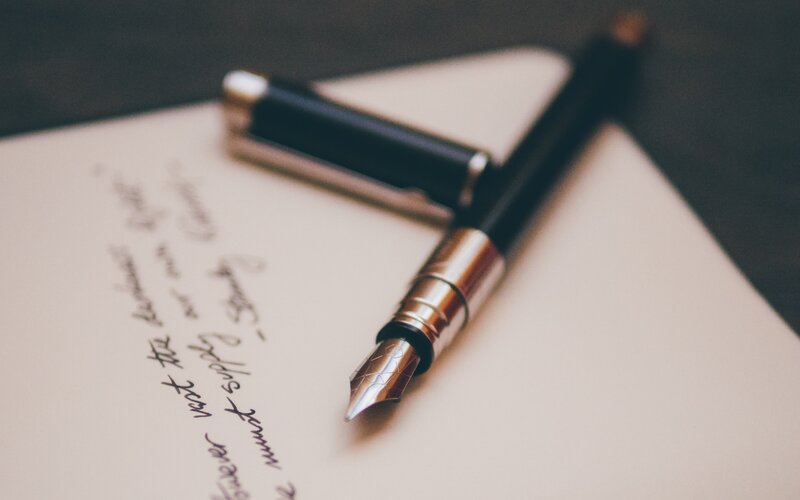
What makes a poem a poem? What sets verse apart from prose? The answer lies in the use of poetry techniques. From Shakespeare’s sonnets to Carol Ann Duffy’s free verse, all our favourite poets make use of literary devices – and you can use them, too, to create poems that resonate with your readers.
Let’s take a look at some of the different techniques for poetry that you can try your hand at if you want to start writing poetry.
Form
Form isn’t exactly a poetry literary technique. But it does provide the structure within which your poem, and therefore your choice of poetic devices, sit – and so it’s important to have a good understanding of the different forms you can choose from when you write a poem.
Poems come in all shapes and sizes, and their form describes the poem’s overarching structure. Some poetic forms are very strict, and the poet should stick to particular rhyming structures when using this form, while others are looser and more open to interpretation.
Some of the most common poetic forms include:
- The sonnet: A 14-line poem, which usually follows a strict rhyming scheme. This rhyme scheme is dependent on the type of sonnet. Two of the most famous types of sonnet are the Shakespearean (or English) sonnet and the Petrarchan sonnet.
- The villanelle: A 19-line poem, made up of five three-line stanzas and one four-line stanza. It’s highly structured, using two repeating rhymes throughout.
- The haiku: A three-line Japanese poem that’s also highly structured. It contains just 17 syllables: five in the first line, seven in the second and five in the third.
- Sestina: A complex form that’s written in six stanzas, each six lines long, with a three-line envoi (a short concluding stanza). These poems usually don’t have a formal rhyming structure.
- Ballads: Poems that follow rhymed quatrains. They usually use an ABCB rhyme scheme and are often quite lengthy!
- Blank verse: A type of poem that doesn’t have a formal rhyming scheme but is written in a consistent metre (usually iambic pentameter).
- Free verse: A poem written in lines that don’t rhyme but closely follow the natural rhythm of speech.
How do you choose which form to use? The first step is to read widely and become familiar with lots of different poetic forms. Eventually, that will give you an instinct for what shape your poem should take.
As Carol Ann Duffy says in her BBC Maestro course, Writing Poetry:
“Your reading will make you familiar with shape and form. Your poem will tell you what shape it wants to be. Some poems want to be longer. Some poems want to be taken in, memorised in the way that a carol can be.”
She encourages you to experiment with writing different types of poetry – even the difficult ones like sestinas and villanelles. She adds:
“Once we are familiar with the old patterns and forms and shapes, we can begin to rough them up; but we can only break the rules because we know what they are.”

Metre
Metre is one of the key structural techniques in poetry. It’s the rhythm of the beats in a poem; the rhythmical pattern of stressed and unstressed syllables.
When talking about metre, we can break it down into two parts: the number of syllables in a line of poetry, and the pattern of stressed and unstressed syllables, also known as a ‘metrical foot.’
The iambic pentameter is probably the best-known metre in poetry, so let’s break it down further. Read the following famous line:
Shall I compare thee to a summer’s day?
This opening line of Shakespeare’s Sonnet 18 is an example of iambic pentameter. An ‘iamb’ is a metrical foot that has one unstressed syllable followed by one stressed syllable, which reads as ‘da-DUM’. ‘Pentameter’ means that there are five of these feet within a line. This line, then, reads: da-DUM, da-DUM, da-DUM, da-DUM, da-DUM.
Another type of metre is trochaic octameter, which has the opposite pattern of stressed syllables. Take the opening line of Edgar Allan Poe’s The Raven:
Once upon a midnight dreary, while I pondered, weak and weary,
It uses a metrical foot called a trochee, which has one stressed syllable followed by an unstressed syllable: DA-dum. ‘Octameter’ means that there are eight trochees within the line, so DA-dum, DA-dum, DA-dum, DA-dum, DA-dum, DA-dum, DA-dum, DA-dum.
There are other types of metre but these are two of the most common. You don’t have to use metre in poetry, but if you do choose to, it helps to set a steady beat in the poem – much like a metronome sets the beat in a piece of music.
Metre can also help to emphasise the meaning of a poem by stressing certain words or drawing attention to specific imagery.
Rhyme
Most of us can clearly remember the nursery rhymes our parents read to us as children. That, as Carol Ann Duffy explains, is because they have rhyme at their core:
“We still remember those little poems by heart because they often have rhyme or rhythm or metre. In a sense, the best poetry is always memorable and closely related to song. We learn the words of hymns, chants, and Christmas carols because they are easily remembered and often repeated.”
In poetry, rhyming is the repetition of syllables, usually at the end of a line, which is known as end rhyme. The combination of rhymes within a stanza is known as a rhyme scheme.
One of the most common rhyme schemes is ‘ABAB’, in which the word at the end of the first and third lines of a stanza rhyme, as do those at the end of the second and fourth lines. Take the first stanza of Carol Ann Duffy’s poem Prayer as an example:
Some days, although we cannot pray, a prayer
utters itself. So, a woman will lift
her head from the sieve of her hands and stare
at the minims sung by a tree, a sudden gift.
The rhyme is subtle, and when spoken aloud, is reminiscent of a prayer being recited, strengthening the poem’s motif.
There are many other rhyme schemes that can be used in poetry (such as ABCB, AABBA and AABB), and poems can also be written without using a rhyming scheme at all, known as free verse.
Rhyme and metre both help to create rhythm in a poem. It adds a musicality to the poem, which can evoke certain feelings in readers. A rhyme scheme, like metre, can highlight specific words in the poem and help to bring images to life.
Assonance
End rhymes aren’t the only type of rhyming to be found in poetry. Another common poetic device is assonance, which is internal rhyming. As Carol Ann Duffy explains it:
“Assonance is important in poetry. This is the half-rhyme, where you change the vowel sound in a word, as in weed/wood, or the consonants, as in weed /scream/receive. Assonance gives the words a musical chime.”
It helps to create rhythm within a poem and can be used to build mood and tension. Long vowel sounds slow down your reading, creating a more downbeat or sombre mood, while short vowel sounds like can pick up the rhythm, making it more upbeat.
Alliteration
Alliteration is the repetition of the same letter or letter sound at the start of words that are close together in a line of poetry, or within several lines in a stanza. Take the poem Originally by Carol Ann Duffy. The first stanza reads:
We came from our own country in a red room
which fell through the fields, our mother singing
our father’s name to the turn of the wheels.
My brothers cried, one of them bawling, Home,
Home, as the miles rushed back to the city,
the street, the house, the vacant rooms
where we didn’t live any more. I stared
at the eyes of a blind toy, holding its paw.
There are several instances of alliteration in just the first few lines, with the repetition of ‘fell’, ‘fields’ and ‘father’s name’.
Alliteration can help to build mood, and it also builds rhythm and pace within your poem. This is particularly important if you’re writing in free verse as, if you’re not using a formal rhyming scheme, it indicates where the emphasis should fall.

Repetition
Alliteration is one form of repetition that’s often used in poetry, but it’s not the only one. Other types of repetition can also create rhythm within a poem, adding a musicality to it, while also helping to convey certain messages, emphasise a feeling or idea, or convey a sense of urgency.
Two of the main types of repetition you need to know about are epistrophe and anaphora.
Epistrophe is a technique in which the same word is repeated at the end of successive lines or phrases, as in Kazim Ali’s poem Rain:
On the other hand, anaphora is a technique, which utilises repetition at the start of a line or phrase. Both techniques can be used to create urgency, hammer home a point, and build tension or excitement within a poem.
Enjambment
Enjambment is the term used when a sentence or phrase spills over from one line of poetry to the next, without any punctuation. One clear example of enjambment can be seen in William Carlos Williams’ Between Walls:
the back wings
of the
hospital where
nothing
will grow lie
cinders
in which shine
the broken
pieces of a green
bottle
Putting punctuation at the end of a line indicates a clear stop when reading poetry. It’s a moment to pause and take a breath. Enjambment, however, encourages a faster pace, compelling the reader to quickly move on to the next line. This builds momentum and adds a sense of urgency.
There are plenty more literary techniques to learn about (some of which you’ll get to grips with in Carol Ann Duffy’s Writing Poetry course), but these are some of the key ones to get you started.
Whether you want to write love poetry, or are keen to give slam poetry a try, it’s useful to have these poetry techniques in your back pocket to create more compelling poetry that will leave a lasting impact on your audience.

Give the gift of knowledge
Surprise a special someone with a year's access to BBC Maestro or gift them a single course.


